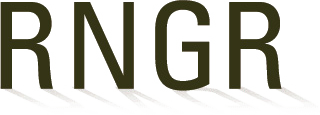
Sambucus (canadensis)
|
Jan Schultz Forest Plant Ecologist USDA FS - Hiawatha National Forest 1030 Wright Street Marquette, Michigan 49855 906.228.8491 906.228.4484 (fax) jschultz@fs.fed.us http://plant-materials.nrcs.usda.gov/copmc/ |
|
| Family Scientific Name: | Caprifoliaceae | ||
|---|---|---|---|
| Family Common Name: | Honeysuckle Family | ||
| Scientific Name: | Sambucus canadensis L. | ||
| Common Name: | Common elderberry | ||
| Species Code: | SANIC4 | ||
| General Distribution: | Wet ground including swamps and floodplains, ditches, borders of woods thickets, shores, scattered in marshes and meadows. Shrub up to 3 meters, multi-stemmed, branched. Spreading underground and forming thickets. | ||
| Propagation Goal: | plants | ||
| Propagation Method: | seed | ||
| ProductType: | Container (plug) | ||
| Time To Grow: | 0 | ||
| Propagule Collection: | Seed is collected by hand from locally native plants in the eastern central Upper Peninsula. Flowers from June to August. Seed is in a purple-black fruit in large flat-topped, umbelliform inflorescences. Seed is collected in August and September. | ||
| Propagule Processing: | Remove the pulp as soon as possible after picking by stripping off the pulp by hand or very lightly in a blender with water or rubbing the berry on a sieve and floating off the pulp. Dry seeds for 1 week. Once seeds have dried, begin scarification and stratification. | ||
| Pre-Planting Treatments: | Scarification: boil enough water to cover the seeds. Let the water-soaked seeds sit for 24 hours. Drain. Use a Ziploc-style bag or a small Rubbermaid-style container to mix an equal amount of seeds with either perlit or vermiculite. Add a small amount of water. (There should be no visible water within the bag or container). Place bag/container in a refrigerator or garage (33-42 degrees F) for at least 2 months. Cold store until planted (up to 3 years). | ||
| Growing Area Preparation/ Annual Practices for Perennial Crops: |
Propagation Environment: Greenhouse film is made of Standard U.V. 3 HL Clear 6 mil (J.R. Johnson's Greenhouse Supply Inc.). Fans run continuously during summer months for cooling. Container Type: grows best in 24 cell (2"diameter) 14"x8.5"x4" deep flats, and other flats with 2" diameter or more and depths of 4" or more. Sowing Media: Scotts Redi-earth Plug and Seedling Mix. Contains vermiculite, and sphagnum peat moss. Soil is sterile. Thoroughly moisten the soil with water, mixing in the water with a trowel. Cover the holes in the bottom/sides of the plug tray cells with newspaper so that the soil does not fall out. Fill cells with damp soil and press soil down with a spoon. Refill the cell plugs with soil to the top, this time not pressing it down. Water the soil in the plug cells again. Sow the seeds by hand at a a rate of about 1 seed in each small cell and 2 seeds in each cell with a diameter greater than 2.5". Cover the seeds with a thin layer of soil or gently press the seeds into the dirt. Sowing Date: Sow seeds year round due to unpredictable germination rates. |
||
| Establishment Phase: | From Jan. until Aug. the greenhouse thermostat is set at 65 degrees F both day and night. Ambient greenhouse temperatures may reach 100 degrees F during the day in the summer. From Sept. thru Dec. the thermostat is set at 55 degrees F. During thisseason ambient greenhouse temperatures may reach 75 degrees F during the day. The greenhouse holds plants at all stages of growth so the so the temperature setting stays the same for all plants at all stages of growth. Soil is kept consistently damp during germination. Water using a fine mist or light hose setting only. Newly planted trays are placed on the south side of the greenhouse. No artificial light is used. | ||
| Active Growth Phase: | The soil does not need to be consistently moist. Move trays to cooler north greenhouse tables. No fertilizers are used. | ||
| Hardening Phase: | In early-late spring, mature plants can be moved into a cold frame with a cover of material that diffuses sunlight to prevent scorching of the plants. When danger of frost has passes leave plants outside. Water less frequently. | ||
| Harvesting, Storage and Shipping: | In the Upper Peninsula, flats are planted from late May to early October. Flats that are not planted in the summer remain in the greenhouse for another season. | ||
| Other Comments: | Valuable food source for wildlife. Grows at a rate of about 2 feet per year. Grows well on disturbed sites. Ideal for sites needing some shrubs and/or shade relatively quickly. | ||
Citation:
Schultz, Jan; Beyer, Patty; Williams, Julie. 2001. Propagation protocol for production of Container (plug) Sambucus canadensis L. plants USDA FS - Hiawatha National Forest Marquette, Michigan. In: Native Plant Network. URL: https://NativePlantNetwork.org (accessed 2025/11/03). US Department of Agriculture, Forest Service, National Center for Reforestation, Nurseries, and Genetic Resources.



